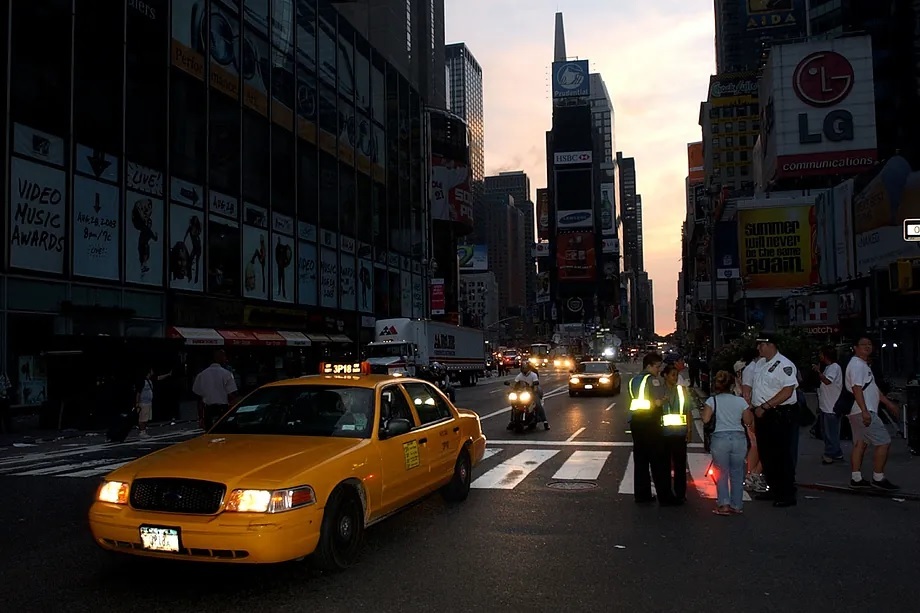The first thing many thought was that it was an attack by Al Qaeda. It was a hot and humid Thursday in August, as usual in the Northeast of the United States, when the capital, Washington, reaches levels of heat and humidity only surpassed by Singapore.
It was four in the afternoon, and most people on the East Coast were thinking about going home, as the American workday usually ends at five. Air conditioners were responsible for putting the buildings in arctic conditions, following the American tradition of not saving on energy, which is much cheaper there than in Europe. The US was running at half capacity because it was August, somewhat concerned about the news showing how the newly invaded Iraq was sinking into an ocean of blood and chaos. What no American thought was that in ten minutes, the largest city in the country, New York, would be left without electricity and cut off from the rest of the world, by land, sea, or air.
And that's what happened. At four-ten, the CNN television network began broadcasting soundless images taken from helicopters outside New York showing cars moving slowly on highways where traffic lights were not working. Then, nothing. Gradually, the news became more alarming. It wasn't just that there was no light in the automotive capital, Detroit, located 775 kilometers in a straight line from New York. It was also that there was no light in the Attawapiskat Indian reserve in Canada, 1,500 kilometers north of the city of skyscrapers.
There was no light in an area of 2.5 million square kilometers, that is, five times the size of Spain, from the Canadian province of Manitoba, in the south of Hudson Bay, Canada, to the border of the states of Pennsylvania and Maryland, just 70 kilometers north of the US capital, Washington. About 60 million people - 45 million Americans and 15 million Canadians - were in the dark, without air conditioning or phone service.
Authorities reacted quickly, at least to dispel the fear that it was a terrorist attack. At that time, the US was living in epic terror of Al Qaeda. The previous summer, Democratic Senator Zell Miller had requested an investigation to determine if the mosquitoes that had caused several cases of 'West Nile fever' had been introduced into the country by Islamic terrorists. And five and a half months earlier, NASA had to rush to clarify that the space shuttle Columbia disintegrated upon reentry into the atmosphere, causing the death of its seven crew members, due to a design flaw and not a terrorist act.
New Yorkers, still living under the trauma of the 3,000 killed in the Twin Towers twenty-three months earlier, were the ones who took it the most calmly. Without the subway, without traffic lights, and with nothing to do, they walked home, in epic walks that lasted for hours. Those who could not do it due to age or health relied on the solidarity of those in cars, albeit at a snail's pace, enduring even greater traffic jams than usual, to give them a ride home.
That night, the dark city was illuminated by candles and flashlights from thousands of parties, impromptu dinners, and celebrations against the backdrop of dark skyscrapers, which made the front page of newspapers worldwide the next day in a time when the Internet had not yet reached phones.
Part of this was due to training. Americans are used to blackouts. As the former Secretary of Energy under Bill Clinton, Bill Richardson, said that same day, "The United States is a country with a Third World electrical grid." A storm in Washington can leave one of the city's most expensive neighborhoods, Chevy Chase, without power for three or four days. California is accustomed to rolling blackouts, where power outages are intentionally implemented by electric companies to relieve demand when it is about to overwhelm the system. In 2000, the electric company Enron - shortly before its collapse in what was once the largest accounting fraud in history - forced blackouts in that state to raise the price of kilowatts.
The gradual restoration of services also contributed to peace of mind. Mobile phones started working - poorly at first, but with increasing reliability - around five-thirty. The first subway trains started running around nine. However, electricity did not return to homes until the early morning, so New Yorkers went to bed with a few extra drinks as they would not do again: under the stars and with an excellent view of the Milky Way in a sky still without Starlink satellites or lights from the International Space Station.
There were no incidents beyond the expected - people trapped in elevators or the subway, postponed surgeries, etc. - and certainly, there was no dystopian nightmare like the 1977 blackout when, amid a heatwave in July, the city suffered looting, according to official data, of 1,809 stores and commercial establishments and 1,037 intentional fires, which resulted in the death of two people.
The blackout was met with total calm by the American and Canadian public opinions and political classes. No one called for resignations. And, also, no one had any idea why it had happened. Washington blamed Ottawa, and vice versa. Several months later, it was concluded that it had been caused by a computer problem at a substation in Ontario, Canada, which did not redistribute the current when high-voltage cables were cut by branches falling from a tree. Something as simple as that left 60 million people in the dark. More than two decades later, no one seems very clear if a similar catastrophe could happen again.
